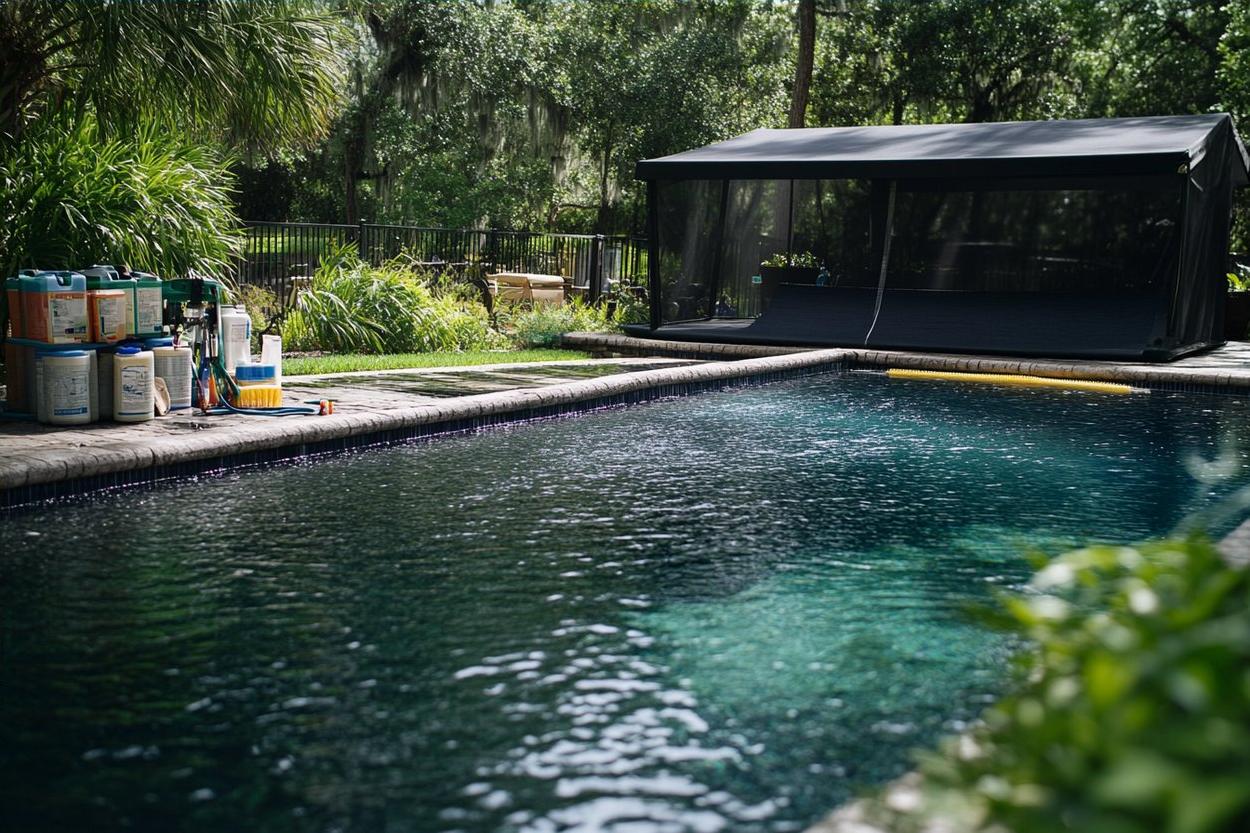The Ultimate Guide to Pool Covers: Choosing, Using, and Maintaining
Pool covers are essential accessories for any swimming pool owner, offering protection, safety, and energy efficiency. Whether you're a new pool owner or looking to upgrade your current cover, this comprehensive guide will walk you through everything you need to know about pool covers, from selection to maintenance.

How to choose the right pool cover for your needs
Selecting the appropriate pool cover depends on various factors, including your pool’s size, shape, and intended use. There are several types of pool covers available, each with its own set of advantages:
-
Solar covers: These lightweight, bubble-wrap-like covers help retain heat and reduce evaporation, making them ideal for extending the swimming season.
-
Safety covers: Designed to support the weight of a person or animal, safety covers provide protection against accidental falls and are essential for families with children or pets.
-
Winter covers: Sturdy and durable, winter covers protect your pool from harsh weather conditions and debris during the off-season.
-
Automatic covers: These motorized covers offer convenience and can be easily opened or closed with the push of a button.
Consider your climate, budget, and specific needs when choosing a pool cover. If you live in an area with harsh winters, a winter cover might be necessary. For those prioritizing energy efficiency, a solar cover could be the best option.
How pool covers prevent debris and dirt from entering your pool
One of the primary functions of a pool cover is to keep your pool clean by preventing debris and dirt from entering the water. This is achieved through several mechanisms:
-
Physical barrier: Pool covers create a physical barrier between the pool water and the surrounding environment, blocking leaves, twigs, and other large debris from falling into the pool.
-
Wind protection: By covering the water surface, pool covers reduce the amount of wind-blown dirt and dust that can settle in your pool.
-
Animal deterrent: Covers discourage animals from entering or using your pool, reducing the risk of contamination from fur, feathers, or droppings.
-
Algae prevention: By blocking sunlight, some pool covers can inhibit algae growth, which thrives in warm, sunny conditions.
By keeping debris and dirt out of your pool, covers significantly reduce the time and effort required for cleaning and maintenance. This not only saves you money on cleaning supplies but also helps maintain proper water chemistry and extends the life of your pool’s filtration system.
How to maintain and clean a pool cover for longevity
Proper maintenance of your pool cover is crucial for ensuring its effectiveness and longevity. Here are some essential tips for maintaining and cleaning your pool cover:
-
Regular inspection: Check your cover frequently for signs of wear, tears, or damage. Address any issues promptly to prevent further deterioration.
-
Remove debris: Use a leaf blower, broom, or pool brush to remove leaves, twigs, and other debris from the cover’s surface regularly. This prevents excessive weight and potential damage.
-
Clean with mild soap: For stubborn dirt or stains, use a soft brush and mild soap solution to gently scrub the cover. Avoid harsh chemicals that could damage the material.
-
Rinse thoroughly: After cleaning, rinse the cover with clean water to remove any soap residue.
-
Allow to dry: Before storing or retracting an automatic cover, ensure it’s completely dry to prevent mold and mildew growth.
-
Proper storage: If you’re removing the cover for an extended period, clean and dry it thoroughly before storing it in a cool, dry place away from direct sunlight.
-
Winter care: For areas with heavy snowfall, use a pool cover pump to remove standing water and prevent excessive weight on the cover.
-
Professional maintenance: Consider having your pool cover professionally serviced annually, especially for automatic covers with mechanical components.
By following these maintenance tips, you can extend the life of your pool cover and ensure it continues to protect your pool effectively for years to come.
Comparing popular pool cover options
When selecting a pool cover, it’s helpful to compare different options to find the best fit for your needs. Here’s a comparison of some popular pool cover types:
| Cover Type | Material | Key Features | Estimated Cost Range |
|---|---|---|---|
| Solar Cover | UV-stabilized polyethylene | Heat retention, reduces evaporation | $75 - $225 |
| Mesh Safety Cover | High-strength mesh | Allows water through, supports weight | $1,500 - $3,000 |
| Solid Safety Cover | Reinforced vinyl | Complete coverage, no water seepage | $1,800 - $3,500 |
| Automatic Cover | Vinyl or polycarbonate | Convenience, energy efficiency | $5,000 - $15,000 |
| Winter Cover | Polyethylene or vinyl | Seasonal protection, affordable | $100 - $400 |
Prices, rates, or cost estimates mentioned in this article are based on the latest available information but may change over time. Independent research is advised before making financial decisions.
The choice of pool cover ultimately depends on your specific needs, budget, and local climate. Consider factors such as ease of use, maintenance requirements, and long-term cost savings when making your decision.
In conclusion, pool covers are invaluable tools for pool owners, offering benefits ranging from cleanliness and safety to energy efficiency. By understanding how to choose, use, and maintain your pool cover, you can enjoy a cleaner, safer, and more efficient swimming pool experience. Remember to regularly inspect and care for your cover to ensure it continues to protect your pool investment for years to come.




